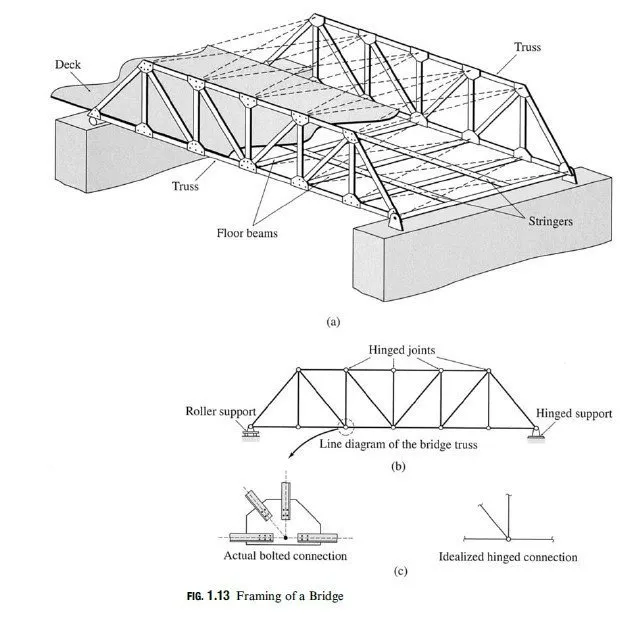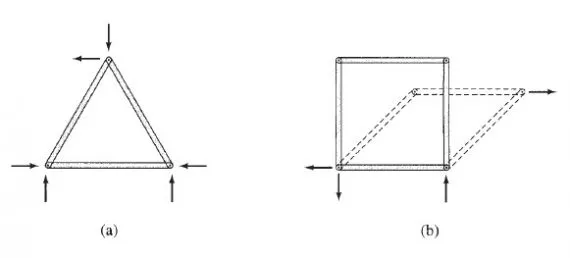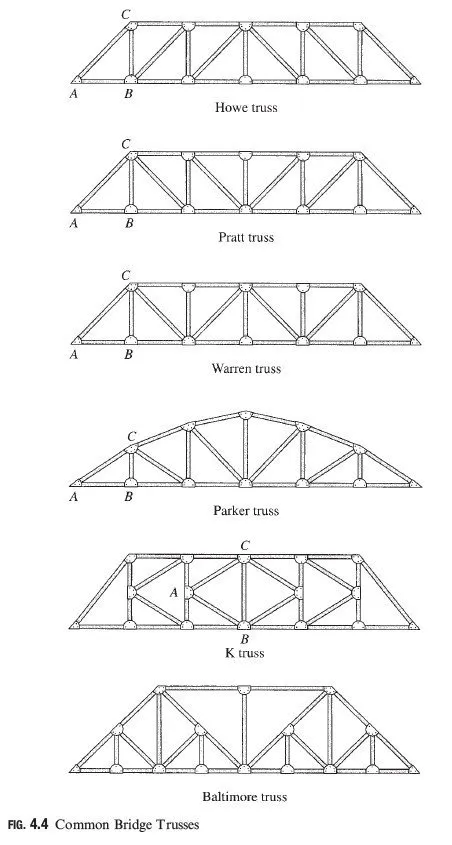Trusses that can be classified neither as simple trusses nor as compound trusses are referred to as complex trusses. Two examples of complex trusses are shown in Fig. 4.27. From an analytical viewpoint, the main di¤erence between simple or compound trusses and complex trusses stems from the fact that the methods of joints and sections, as described previously, cannot be used for the analysis of complex trusses. We can see from Fig. 4.27 that although the two complex trusses shown are statically determinate, after the computation of reactions the method of joints cannot be applied because we cannot find a joint at which there are two or fewer unknown member forces. Likewise, the method of sections cannot be employed, because every section would pass through more than three members with unknown forces. The member forces in such trusses can be determined by writing two equilibrium equations in terms of unknown member forces for each joint of the truss and then solving the system of 2j equations simultaneously. Today, complex trusses are usually analyzed on computers using the matrix formulation presented in Chapter 18.



